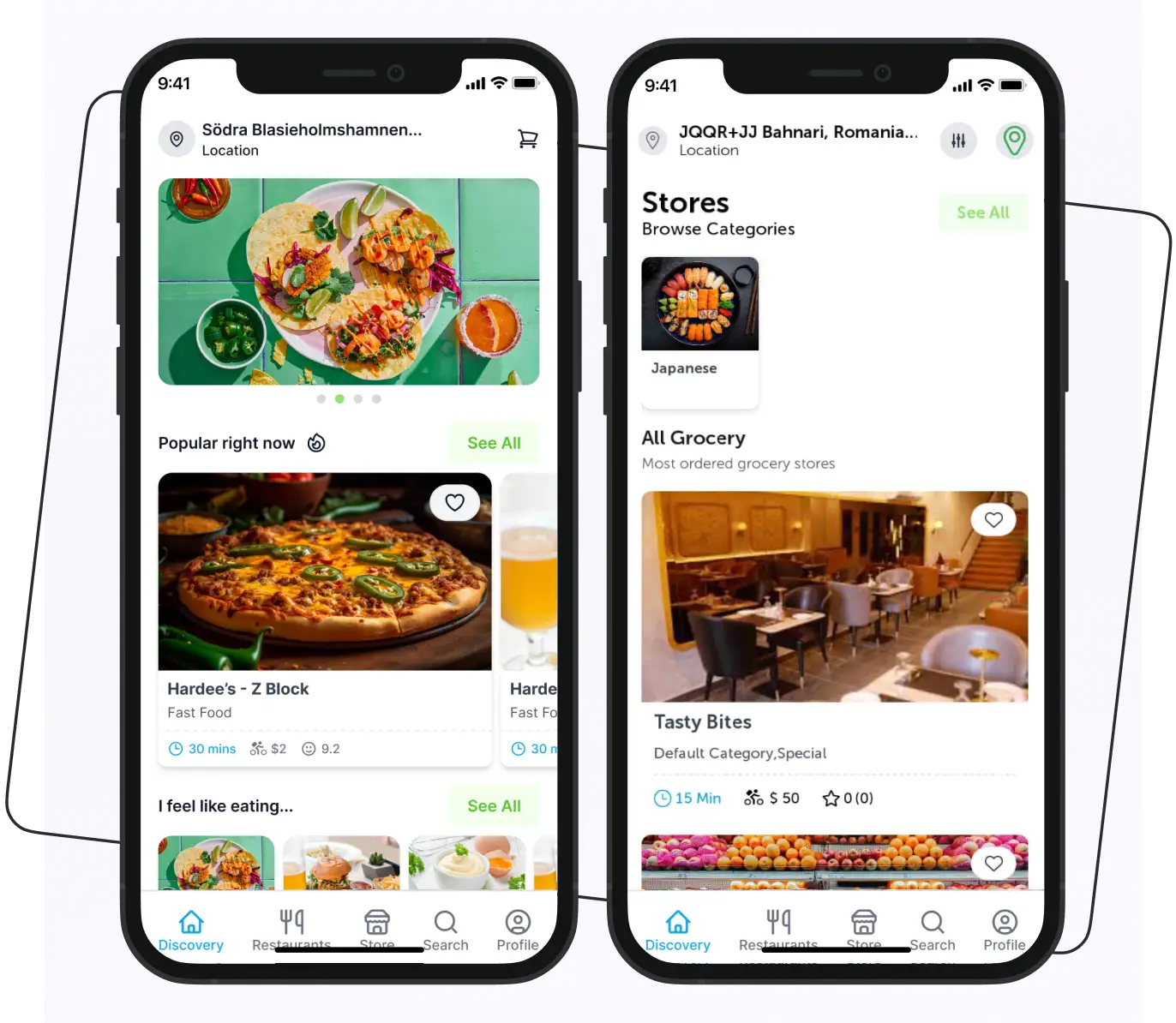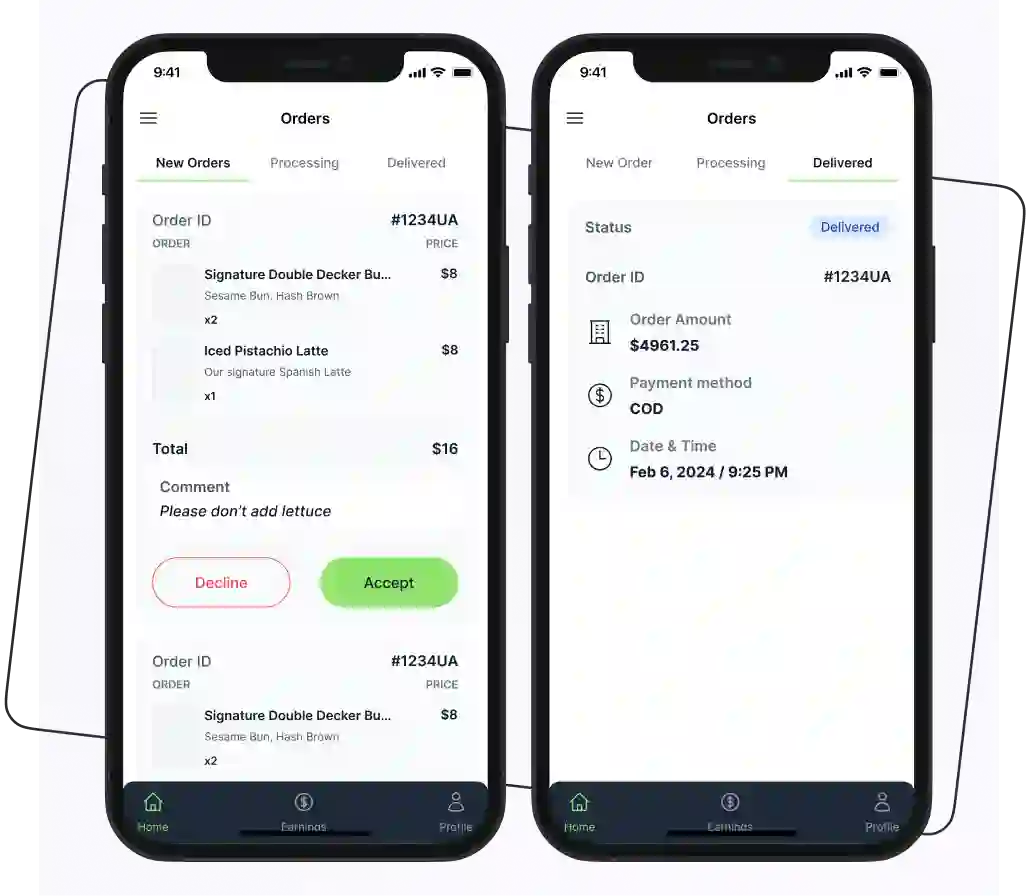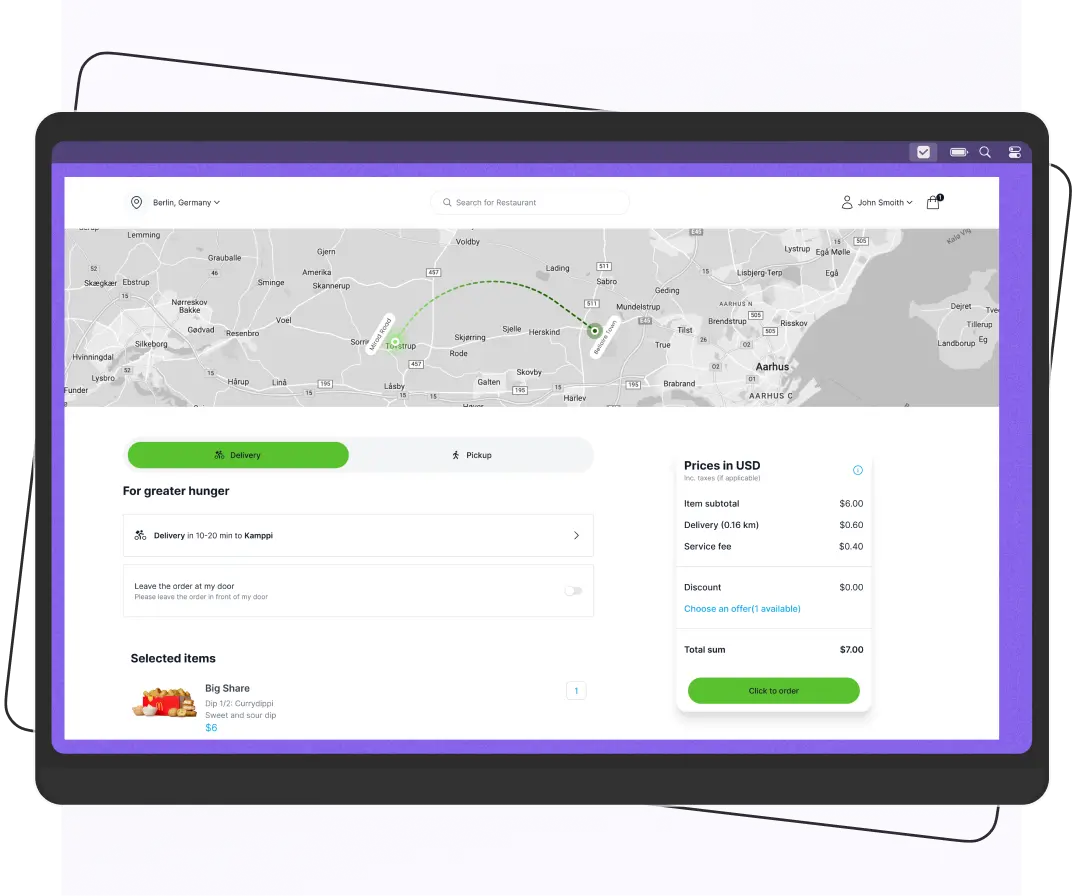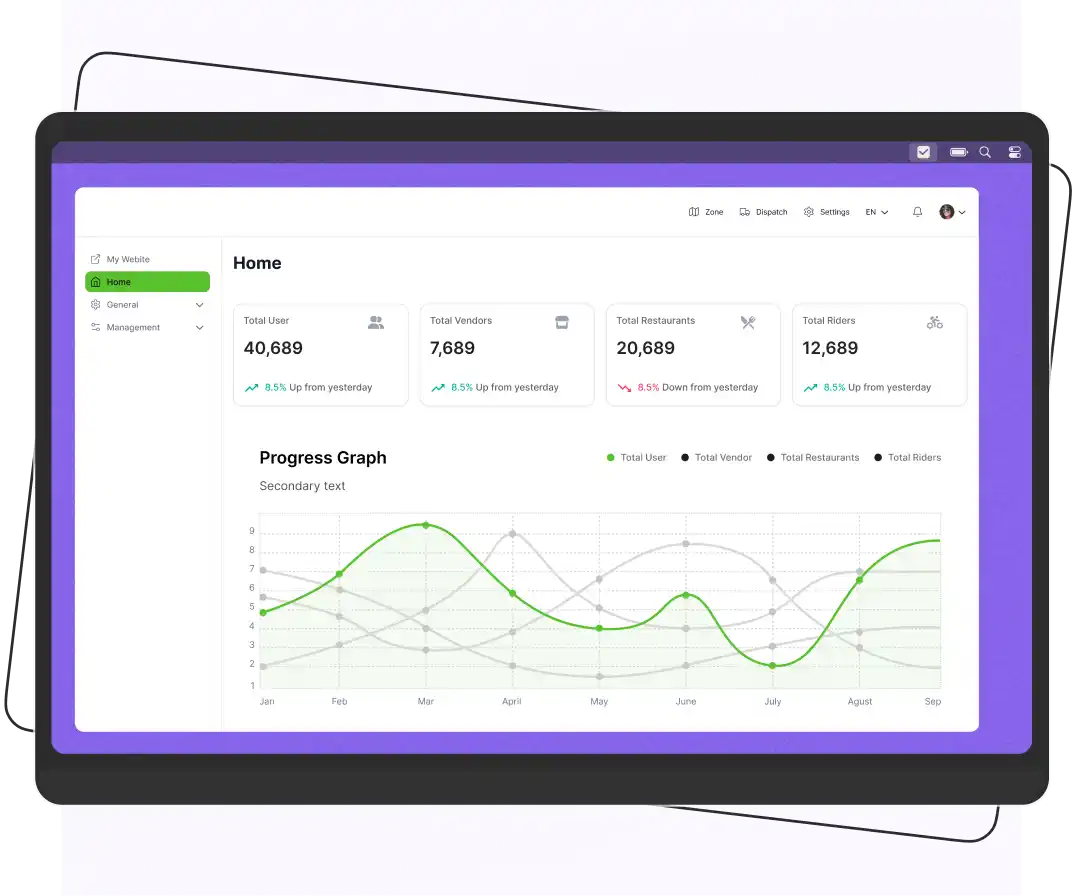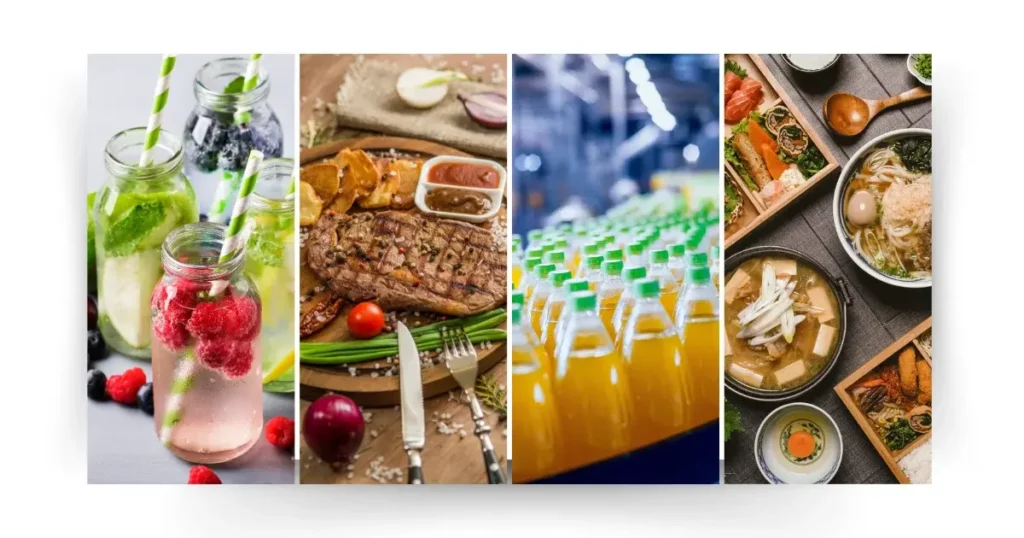
Key Takeaways
- The food industry is growing fast but faces major challenges.
- Rising costs, labor shortages, and changing consumer demands are key concerns.
- Tech adoption and supply chain efficiency are essential for success.
- Smart strategies and digital tools can help businesses stay competitive.
Every industry has its unique mix of strengths and weaknesses, and the food and beverage sector is no different.
This sector is experiencing rapid growth, projected to reach $4.32 billion by 2029. This growth has changed the way we enjoy our meals, introducing new standards for delivery and convenience.
But, like any growing industry, the food and beverage sector faces its share of challenges. Every year, businesses encounter various hurdles, and understanding these issues is key to succeeding in such a competitive market.
In this blog post, we will explore the biggest challenges faced by the food and beverage service industry and some smart solutions to tackle them.
What are the Key Challenges in the Food Industry?
Every year, food businesses and food-related organizations face some challenges that may significantly affect their business. So, let’s discuss the issues and their solutions in detail.

1. Changing Customer Preferences
It is one of the biggest challenges in the food industry. The food and beverage sector is experiencing a shift towards healthier, sustainable, and ethically sourced products. Consumers are increasingly demanding:
Vegan and Plant-Based Options: There’s a growing interest in plant-based diets, prompting businesses to innovate their menus.
Organic and Non-GMO Products: Customers are looking for transparency in sourcing and production.
Solution: Companies can adapt by diversifying their offerings and investing in research to understand emerging trends. Regularly updating menus and providing clear information about sourcing can enhance customer satisfaction.
2. Increasing Competition
The food and beverage market is growing, with numerous players struggling for consumer attention. This competition can lead to companies lowering prices to attract customers, impacting profit margins. Companies must continuously innovate to stay relevant and meet customers’ demands.
Solution: Differentiation through unique offerings, exceptional customer service, and effective branding can help businesses stand out. Investing in innovative technologies to lower overall costs. Paying attention to marketing strategies that highlight your business’s unique selling points.
Supercharge your deliveries with Enatega.
Get A Quote3. Labor Shortage
The labor shortage is a significant challenge for businesses in the food and beverage sector. Companies rely on skilled workers to operate efficiently and maintain high service standards. However, many food business owners are struggling to find qualified personnel, which can lead to several issues:
- Without enough trained staff, service can suffer, leading to longer wait times and a decline in customer satisfaction.
- Businesses may need to offer higher wages or benefits to attract talent, which can increase overall operational expenses.
- Existing staff may be overworked, leading to stress.
Solution: To overcome this issue, follow these strategies.
- Investing in training programs can help develop talent from within, creating a skilled workforce tailored to the company’s needs.
- Offering flexible schedules or remote work options (where applicable) can attract a broader range of applicants.
- Creating a supportive and inclusive workplace culture can improve employee retention and attract new talent.
4. Keeping Products Fresh
To prevent spoiling, food products frequently need exact environmental control. Inadequate storage, long travel durations, and fluctuating outdoor temperatures can all lead to a decline in quality and safety.
Solution: To address this problem, you should follow these tips.
- Store perishable items in a refrigerator set between 32°F and 40°F (0°C to 4°C).
- Use a thermometer to monitor the temperature regularly.
- Keep fruits and vegetables in separate drawers to control humidity levels.
- Use moisture-absorbing materials in storage areas to prevent excess moisture.
- Use insulated bags or coolers for transporting perishables.
- Regularly check expiration dates and rotate stock (first in, first out).
- Clean storage areas and equipment regularly to prevent mold and bacterial growth.
- Train employees on proper storage techniques and the importance of maintaining optimal conditions.
5. Rising Ingredients Cost
One of the main problems in the food and beverage industry is the rising cost of ingredients. It greatly impacts the profits of food and beverage delivery businesses.
In December 2024, food prices were 2.5% higher than they were in December 2023, according to the USDA.
Solution: To avoid this issue, businesses must find a way to control the costs of making their products without impacting quality.
Here are some ways to help you control the cost without impacting the food quality.
- Create and stick to a budget for food and beverage delivery service. Avoid overspending on less important areas.
- When you source your ingredients from local farmers and suppliers, the food travels a shorter distance to reach your restaurant. This not only lowers fuel and delivery costs but can also affect menu pricing.
- Ordering in smaller quantities helps minimize spoilage, ensuring fresher ingredients and less waste.
- Analyze competitor pricing and then set your prices.
- Agree to a long-term contract with the vendor. If you’re confident in the supplier’s quality, sign a longer contract at lower prices. It helps you save money.
- Maintain a positive relationship with the vendor. The vendors don’t want to lose customers who communicate clearly and pay on time. If you have a positive track record, the vendor offers you a modest price.
6. Technology Integration
Modern technology allows food and beverage companies to maintain and improve their operational efficiency. However, many businesses face challenges in keeping up with advancements, ranging from online ordering systems to inventory management solutions.
Additionally, drone software for agriculture is becoming increasingly valuable, enabling companies to optimize crop monitoring and improve yield predictions, enhancing overall productivity in the food supply chain. As reliance on technology increases, so do the risks associated with data breaches.
Solution: Here is a solution to this challenge faced by food and beverage companies.
- Select reputable vendors for online ordering and inventory management systems that prioritize security and compliance.
- Consider cloud-based platforms that offer built-in security features and regular updates.
- Use encryption for sensitive customer information and payment data to protect it from unauthorized access.
- Use AI in the food industry and maintain business operations.
- Perform regular security audits to identify vulnerabilities in your systems and processes.
- Establish a routine for backing up data to secure locations to prevent data loss.
- Consult with legal professionals to ensure your practices align with applicable laws.
- Communicate with customers about your data protection measures and how their information is safeguarded.
7. Managing Food Loss and Waste
Food waste is a big problem that affects both the environment and businesses in the food industry. Every year, millions of tons of food are thrown away. When food rots in landfills, it releases methane, a harmful greenhouse gas that contributes to climate change. This waste not only harms the planet but also wastes important resources like water, labor, and energy used to grow and transport food.
For businesses, throwing away food means losing money. It leads to higher costs for disposal and often results from buying too much food. Addressing food waste is important for both ethical and business reasons. It can help the environment, save money, and build customer loyalty.
Solution: Follow the below-mentioned practices to minimize waste.
- Implement systems to track and manage stock efficiently. Use technology to forecast demand accurately, ensuring that stock levels match customer needs and reducing the likelihood of spoilage.
- Encourage customers to take leftovers home. Offer packaging options that make it easy for diners to take food with them, and promote awareness about the environmental impact of food waste.
- Review and adjust portion sizes based on customer feedback and consumption patterns. This can help to reduce the amount of food left uneaten on plates.
- Conduct audits to analyze what types of food are being wasted most frequently. This data can inform purchasing and menu decisions, allowing for more efficient operations.
8. Supply Chain Disruptions
The food and beverage industry often faces significant supply chain disruptions due to various factors, including:
- Natural Disasters: Events like floods, hurricanes, or droughts can affect agricultural production and transportation.
- Pandemics: Health crises can lead to workforce shortages and restrictions on movement.
- Geopolitical Issues: Tariffs, trade wars, and political instability can disrupt international supply chains.
- Market Fluctuations: Changes in consumer demand can lead to overproduction or shortages.
Solution: To avoid this issue in issues in food and beverage industry, you have to follow these strategies.
- Establish relationships with multiple suppliers to reduce dependency on a single source.
- Source ingredients locally when possible to mitigate global supply risks.
- Implement advanced technologies like AI and IoT for real-time monitoring and predictive analytics.
- Develop flexible supply chain strategies that can adapt quickly to changing conditions.
- Invest in sustainable sourcing to reduce vulnerability to environmental changes.
- Develop and regularly update crisis management protocols to respond effectively to disruptions.
FAQs
1. What are the 3 problems with our food industry?
Food losses, food crises, and food safety are the main problems that are faced by the food industry.
2. Why is the food industry struggling?
Below are some reasons that show why the food industry is struggling.
- Rising labor cost
- Inflation
- Unsustainable agricultural practices
3. What are the factors affecting the development of the food and beverage industry?
Here are a few factors that affect the development of the food and beverage industry.
- Shortage of raw materials
- Poor tax administration and standards
- Lack of specialized technologies
4. What is the most important thing in the food and beverage industry?
The most important thing in the food and beverage industry is ensuring food safety and quality, as it directly impacts customer health and satisfaction. Consistency in taste and service also plays an important role in building brand loyalty.
5. What are the 3 parts of the food and beverage industry?
The food and beverage industry can be divided into three main parts.
Production: This includes agriculture, food processing, and manufacturing, where raw ingredients are cultivated and transformed into food and drink products.
Distribution: This involves logistics, supply chain management, and retail. Also, it includes the transportation and sale of food and beverages to customers.
Service: This involves restaurants, cafes, bars, and catering services, where food and beverages are prepared and served to customers.
6. What are the latest trends in the food and beverage industry?
Here are some of the latest trends in the food and beverage industry.
Plant-Based Foods: Increasing demand for vegan and vegetarian options, with innovations in meat alternatives and dairy substitutes.
Health and Wellness: Growing interest in functional foods, organic ingredients, and products that promote health benefits, such as probiotics and superfoods.
Convenience: Rise of ready-to-eat meals, meal kits, and delivery services catering to busy lifestyles.
Technology Integration: Use of apps and AI for personalized dining experiences, inventory management, and enhancing customer engagement.
7. What technology is used in the food and beverage industry?
The food and beverage industry uses various technologies, including:
- Automation and robotics
- Artificial Intelligence (AI)
- Blockchain
- Internet of Things (IoT)
8. What are the factors affecting the beverage industry?
Below are the factors that affect the beverage industry.
- Customer preferences
- Economic condition
- Supply chain
- Government regulations
- Technological advancements
9. What is the biggest issue with food?
The biggest food issue is food insecurity, which affects millions globally due to factors like poverty, conflict, climate change, and inefficient food systems.
10. What are the critical success factors for the food industry?
Critical success factors for the food industry include:
- Quality and Safety: Ensuring high standards in food safety and quality to meet consumer expectations and regulatory requirements.
- Supply Chain Efficiency: Streamlining operations to reduce costs and improve distribution reliability.
- Marketing and Branding: Building a strong brand presence and effectively communicating value to target audiences.
Supercharge your deliveries with Enatega.
Get A QuoteConclusion
The food and beverage industry is growing rapidly, but with growth comes challenges. By addressing these common problems in the food service industry proactively, businesses can position themselves for success in a competitive market.
For those looking to enter or compete in the food delivery sector, developing a user-friendly food app can be a strategic move. This approach not only enhances the customer experience but positions the business for long-term success in an increasingly digital marketplace.
So, book a free demo with us, discuss your needs, and get the fully functional app that meets your business needs.













 IOS
IOS Android
Android Web
Web